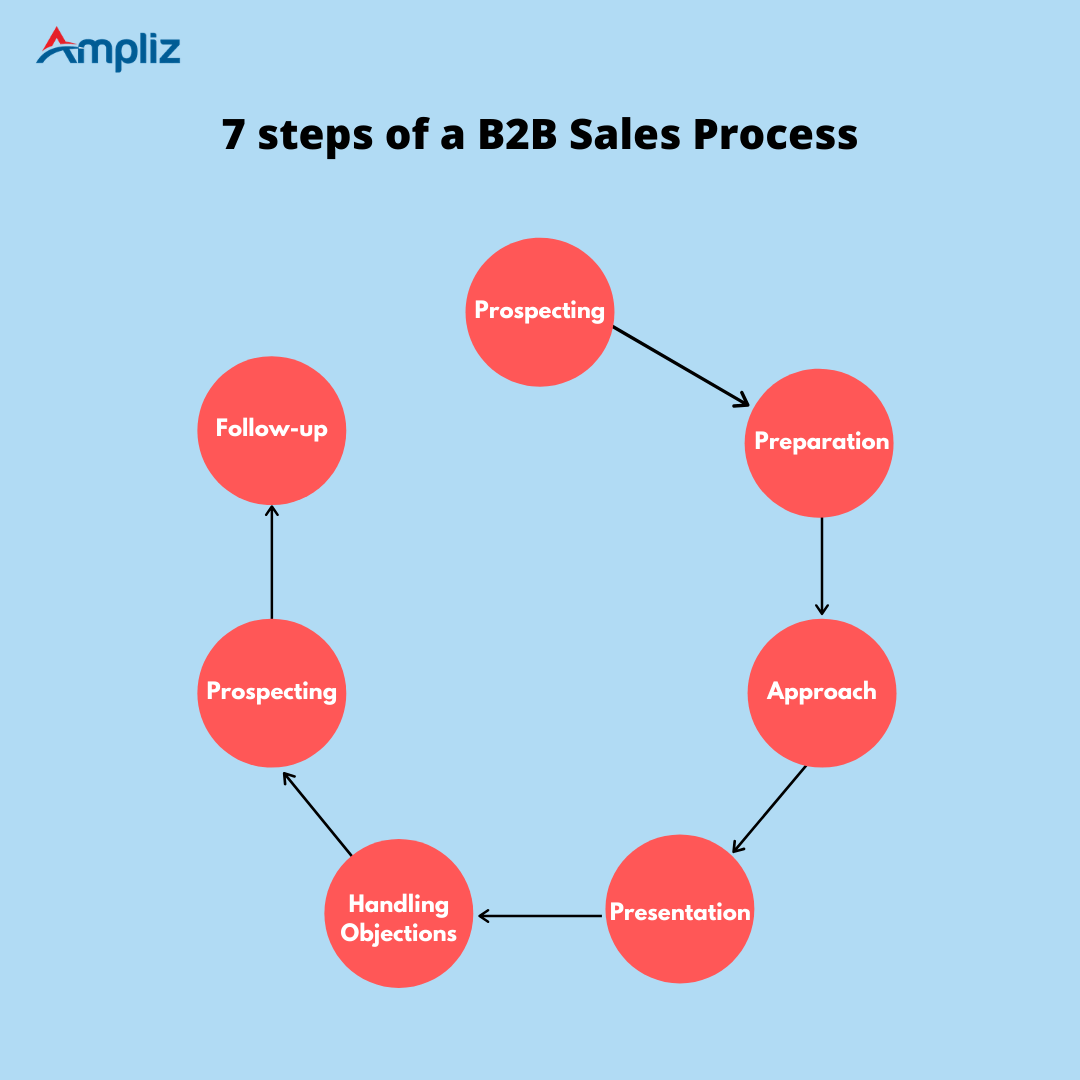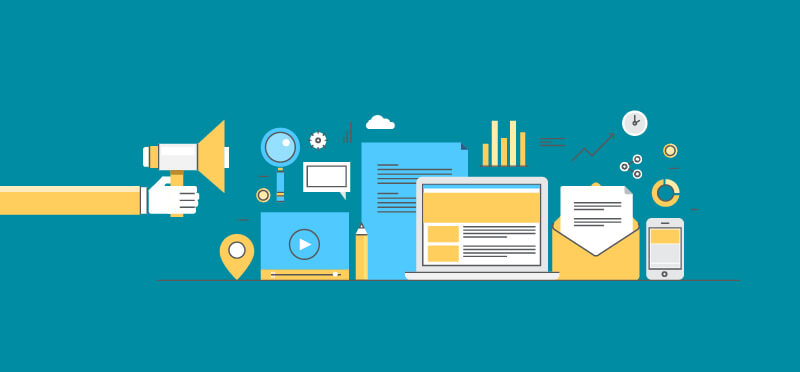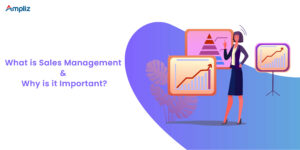A B2B sale is an exchange of products and services or cash or in-kind within businesses for availing a service or services, a product or products is called B2B sales.
It simply refers to all the stages involved in the selling of product(s) and/or service(s) by one business to another.
A B2B transaction can take place in various formats. To understand this better, consider two organizations, A and B. Both A & B are selling products and services to each other. They can go about doing business with each other in the following ways:
| A | B |
| Products | Cash/Kind |
| Services | Cash/Kind |
| Cash/Kind | Cash/Kind |
| Products | Products |
| Services | Products |
| Cash/Kind | Products |
| Products | Services |
| Services | Services |
| Cash/Kind | Services |
Based on the requirements, the business can choose from above how they go about to do a transaction. It can also be a mix of the above where they can choose to combine more than one or all if possible. It differs from business to business.
Before coming to this final stage of the transaction, most B2B sales follow a specific sales process to perform sales effectively.
Today, more than 1 in 5 B2B companies have a structured sales process, a massive jump from 1 in 10 a few years ago. A quality sales process is the most significant competitive advantage you can ever have. It should be every company 1st priority on the list.
According to an HBR Report, companies with a personalized and well-managed sales process have seen an increase of 15% in their growth rate and a 28% increase in their revenue.

What is a B2B selling process?
A B2B sales process is a set of structured, personalized, refined, repeatable steps that a business follows in conducting sales. It takes a prospective buyer (enterprise) from the awareness stage to need appreciation (both the companies realize that there is an inherent need) and, finally, close the sale.
It is standardized across the organization. It increases the chances of success or closing a deal on meeting specific parameters.
Isolate the activities to define the parameters, and then allocate percentage values to each parameter for the total to arrive at 100% success. Keep improvising and shorten the time spent in the sales process. If you are looking for a sales job then search and apply for the latest B2B sales jobs here.
Benefits of an effective B2B sales process
Having an effective sales process has its perks. The perks are worth the challenges and obstacles you faced to get it working. So the perks are as follows:
- Now you easily identify the customer needs accurately.
- You develop solutions that work for your customers and you.
- You are persistent, not bothersome.
- Staying connected and building long-lasting relationships with your customers come easy for you now.
- You make data-driven decisions.
- You find the cause of non-progressive sales leads.
- You get better-qualified leads and close more sales.
- Your sales and revenue forecasting become more or less accurate.
- You give a better customer experience.
- Onboarding and training of new sales rookies have become stress-free.
- You ensure high customer lifetime value.
- Customer retention cost decreases over time.
- You get more customer referrals.
- Your marketing and sales activities are aligned to work towards the same goal.
- You enable prospects to make better buying decisions.
- Easily connect with the prospect in their preferred channels.
What is a 7 step sales process for a B2B company?
So you see, having a sales process is imperative to your business. Now that we have discussed the benefits of it, let’s see in detail the 5-7 steps involved in developing a sales process.
7 Stages of a B2B sales process:
1. Prospecting
2. Preparation
3. Approach
4. Presentation
5. Handling objections
6. Closing
7. Follow-up

1. Prospecting
Prospecting is the first step in the 7 step selling process. In this stage
- You find potential customers.
- Determine whether they need your product or service.
- Find out if they can afford you.
Qualifying a lead means to evaluate whether the customers need your product or service and if they can manage to pay for your product or services. Profile them into a lead, a prospect, and a qualified prospect.
When qualifying, follow either the GPCT method for prospecting:
- Goals – Quantify the goals you need to achieve
- Plans – Strategize and devise tactics to achieve the above goals?
- Challenges – What are the roadblocks in your way, and how do you get over it?
- Timing – By when are you planning to achieve your goals?
Or the BANT approach:
- Budget – Do they have the means to fund a solution to the problem?
- Authority – Determine who’s influential enough to authorize the purchase decision in the organization.
- Need – What is the pain point that the buyer has, which is yet to be solved?
- Timeline – Is there a specific time frame within which the prospect needs your solution?
Profile each lead and devise the different ways you can approach prospects for sales. It is an ongoing process. Everyone in the organization should be involved in it. An opportunity can contact you or vice versa from any activities or campaigns you are running.
2. Preparation
In the second step of the 7 steps to sale, you would want to prepare for:
1. The initial conversation with a potential customer
2. Research the market and the customer
3. Identify the decision-maker
4. Their pain points
5. Collect all relevant information regarding your product or service.
At this point, you create and tailor your sales presentation to your potential client’s particular needs. Acquire product knowledge like a counsellor so that you preach less about the product features and more about how the customer benefits from the different elements of the product.
While discussing the product, ask yourself one question, “So what?”
Think about those two words in the shoes of the prospect. And think about what they would contemplate every time a feature is mentioned to them, and re-learn your product from the customers’ perspective. This step will set you on the right track in your sales process.
3. Approach
You contact your clients for the first time in the approach stage. There are three conventional approach methods to make the first contact. Take this as an opportunity to build a lasting relationship.
- Premium approach: Present your potential client with a gift at the beginning of the interaction.
- Question approach: Ask questions that can get prospects interested.
- The product approach: Give the prospect a free trial to review and evaluate your service.
4. Presentation
Of the 7 sales steps, in the presentation phase, you actively demonstrate as well as understand how your product or service offerings align with the needs of your potential customer. Keenly listen to your customer’s needs and act accordingly.
Seek clarity on your customer’s goals. You can accomplish this by asking the right questions about their current priorities, revenue projections.
Ask your customers about their plan of action for achieving their goals. Customers value insights, expert opinions and do not like treated like a number on the target list. Give valid feedback on their methods and make recommendations.

5. Handling objections
Handling objections is the most important and one of the most ignored of the seven steps of a sales process. Listen to your prospect’s concerns carefully and address them immediately.
It’s where many salespeople fail:
1. 44% of salespeople abandon pursuit after one rejection
2. 22% after two rejections
3. 14% after three
4. 12% after four
It is worth noting that 4 out of 5 sales require at least five follow-ups to convert.
Successful handling of objections and alleviating concerns differentiates good from bad and a great from a good salesperson.
Address the gap between the plans and the goals of your customer. Examine each aspect of their strategy that did not work for them jointly. Help and guide them to understand why they (might) need external assistance.
Create a timeline; it is crucial for you and your customer. You should be aware of the timeframe that the lead is currently on. Know how much time they have to reach their goals and how soon will they implement plans. It helps prioritize and target leads that have an immediate requirement.
6. Closing
Closing is all about getting an order. At each stage, what you are selling can change. For example, a close in the earlier part of the sales process may be an appointment for discussion, so you are trading time, not a product.
At the later stages, a need might arise to meet the committee; in that case, what you are selling is a meeting. Seeing the sale process in this light takes a little pressure off of each encounter and makes things a bit more manageable. But don’t be lulled into complacency, you must ultimately ask for the order, and no sales conversation should ever end without an agreement to some next step.
In a closing stage, you get the decision from how your client wants to move forward. Depending on your business and their requirement, you might try one of these three closing strategies.
- Choice close: Assume you are offering the prospect an opportunity, where both options close the deal .e.g. “Would you be paying the whole fee upfront or in installments?” or “Will that be cash or kind?”
- Alternative inducement close: Give something extra goodies or discounts to close the sales, such as a free month of service or a refund.
- Standing room only close: Create an urgency by expressing that time is of the essence—for example, “A hike in price after this month” or “Limited Seats Available.”
7. Follow-up
Your job is still unfinished even if you have closed the sale. The follow-up stage keeps you in contact with customers you have secured it, not only for potential repeat business but for referrals as well. And since retaining current customers is six to seven times less costly than acquiring new ones, maintaining relationships is crucial.
Good follow-ups double your closing ratio. A salesperson should always try to build a relationship with a prospect. A follow up is how you nurture a customer.
Staying in a prospect’s mind-space requires persistence and shouldn’t be confused with being niggling. So it’s essential to get into an agreement on a set of next steps each time there is contact.
Follow up should be, therefore, a never-ending process especially in a b2b sales process. The pace may be unhurried, but it shouldn’t stop. After a sale is complete, then a different type of follow up activates.
The one who initiated the relationship better handle the follow-ups conversations. They can better gauge a prospect’s “willingness to buy” or pick up where they last left off.
It means detailed follow-ups must be kept on each prospect emphasizing their “state of mind.” It will be unwise and ineffective if you keep track of this information anywhere other than a centralized database.
A good sales process is not a fixed process. A sales process should be adaptable and evolving as the business environment changes. It should always be a work in progress. The perks outshine the challenges it poses to create an effective B2B sales process.
Therefore, include the above mentioned 7 steps into your sales process to reap maximum value.




